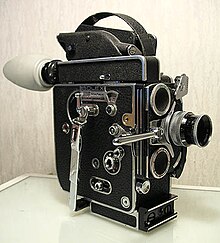Film theory

"Film theory" seeks to develop concise and systematic concepts that apply to the study of film as art. The concept of film as an art-form began in 1911 with Ricciotto Canudo's The Birth of the Sixth Art. Formalist film theory, led by Rudolf Arnheim, Béla Balázs, and Siegfried Kracauer, emphasized how film differed from reality and thus could be considered a valid fine art. André Bazin reacted against this theory by arguing that film's artistic essence lay in its ability to mechanically reproduce reality, not in its differences from reality, and this gave rise to realist theory. More recent analysis spurred by Jacques Lacan's psychoanalysis and Ferdinand de Saussure's semiotics among other things has given rise to psychoanalytic film theory, structuralist film theory, feminist film theory, and others. On the other hand, critics from the analytical philosophy tradition, influenced by Wittgenstein, try to clarify misconceptions used in theoretical studies and produce analysis of a film's vocabulary and its link to a form of life.
Language
Film is considered to have its own language. James Monaco wrote a classic text on film theory, titled "How to Read a Film," that addresses this. Director Ingmar Bergman famously said, "Andrei Tarkovsky for me is the greatest director, the one who invented a new language, true to the nature of film, as it captures life as a reflection, life as a dream." An example of the language is a sequence of back and forth images of one speaking actor's left profile, followed by another speaking actor's right profile, then a repetition of this, which is a language understood by the audience to indicate a conversation. This describes another theory of film, the 180-degree rule, as a visual story-telling device with an ability to place a viewer in a context of being psychologically present through the use of visual composition and editing. The "Hollywood style" includes this narrative theory, due to the overwhelming practice of the rule by movie studios based in Hollywood, California, during film's classical era. Another example of cinematic language is having a shot that zooms in on the forehead of an actor with an expression of silent reflection that cuts to a shot of a younger actor who vaguely resembles the first actor, indicating that the first person is remembering a past self, an edit of compositions that causes a time transition.
Montage
Montage is the technique by which separate pieces of film are selected, edited, and then pieced together to make a new section of film. A scene could show a man going into battle, with flashbacks to his youth and to his home-life and with added special effects, placed into the film after filming is complete. As these were all filmed separately, and perhaps with different actors, the final version is called a montage. Directors developed a theory of montage, beginning with Eisenstein and the complex juxtaposition of images in his film Battleship Potemkin. Incorporation of musical and visual counterpoint, and scene development through mise en scene, editing, and effects has led to more complex techniques comparable to those used in opera and ballet.
Film criticism
Film criticism is the analysis and evaluation of films. In general, these works can be divided into two categories: academic criticism by film scholars and journalistic film criticism that appears regularly in newspapers and other media. Film critics working for newspapers, magazines, and broadcast media mainly review new releases. Normally they only see any given film once and have only a day or two to formulate their opinions. Despite this, critics have an important impact on the audience response and attendance at films, especially those of certain genres. Mass marketed action, horror, and comedy films tend not to be greatly affected by a critic's overall judgment of a film. The plot summary and description of a film and the assessment of the director's and screenwriters' work that makes up the majority of most film reviews can still have an important impact on whether people decide to see a film. For prestige films such as most dramas and art films, the influence of reviews is important. Poor reviews from leading critics at major papers and magazines will often reduce audience interest and attendance.
The impact of a reviewer on a given film's box office performance is a matter of debate. Some observers claim that movie marketing in the 2000s is so intense, well-coordinated and well financed that reviewers cannot prevent a poorly written or filmed blockbuster from attaining market success. However, the cataclysmic failure of some heavily promoted films which were harshly reviewed, as well as the unexpected success of critically praised independent films indicates that extreme critical reactions can have considerable influence. Other observers note that positive film reviews have been shown to spark interest in little-known films. Conversely, there have been several films in which film companies have so little confidence that they refuse to give reviewers an advanced viewing to avoid widespread panning of the film. However, this usually backfires, as reviewers are wise to the tactic and warn the public that the film may not be worth seeing and the films often do poorly as a result. Journalist film critics are sometimes called film reviewers. Critics who take a more academic approach to films, through publishing in film journals and writing books about films using film theory or film studies approaches, study how film and filming techniques work, and what effect they have on people. Rather than having their reviews published in newspapers or appearing on television, their articles are published in scholarly journals or up-market magazines. They also tend to be affiliated with colleges or universities as professors or instructors.
Comments
Post a Comment